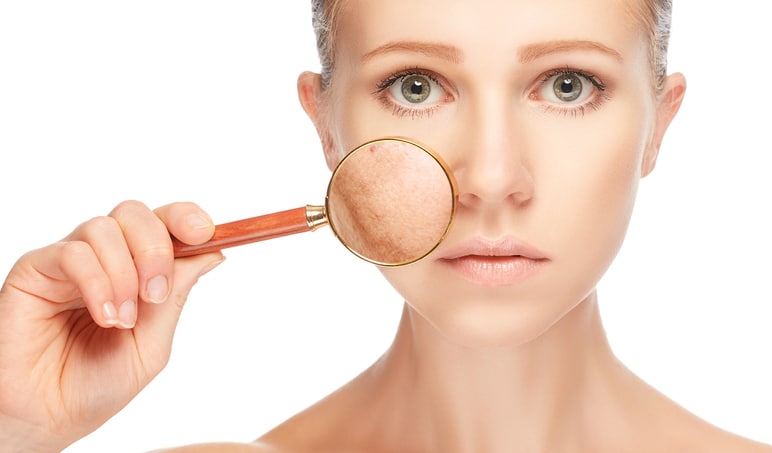Is This Considered Sun Damage?

Many of us would jump at the chance to vacation in the tropics. Picture it now—basking in the sun on a beautiful beach, swimming in the ocean, and of course, sipping brightly colored cocktails decorated with tiny umbrellas. The last thing you picture about beach vacations is all the excess sun exposure that will eventually lead to sun damaged skin. But don’t scrap the idea of going to the beach. There are ways to enjoy the sun responsibly that will minimize your chance of dealing with sun damage later in life.
What Is Sun Damage?
Anytime you spend time outdoors, you’re adding to your lifetime exposure to the sun’s damaging UV (ultraviolet) rays. Over the years UV rays slowly but surely break down the elastin in the skin, fibers that allow the skin to bounce back into place. When elastin breaks down, skin begins to sag, stretch, and bruise more easily. The following conditions will also become more noticeable over time:
- Wrinkles
- Brown discolorations known as age spots
- Loose skin
- Uneven, reddish complexion
- Purple, blue, or red spider veins
- Scaly patches known as actinic keratoses (AK). AKs are pre-cancerous skin lesions.
How Can I Avoid Sun Damage?
You can’t completely avoid sun damage. In fact, most of the sun damage you’ll ever experience happened before you turned 18. However, it’s not too late to take proactive steps to reduce further skin damage caused by UV rays. Try the following suggestions to minimize your daily sun exposure:
- Apply sunscreen with an SPF (sun protection factor) of 30 or more at least 20 before spending time in the sun. Reapply every two hours or more if you’re swimming or sweating.
- Wear clothes, makeup, sunglasses, and contact lenses that contain UV protection.
- Wear wide-brimmed hats to shade your face and neck from the sun.
- Check your skin monthly to see if any new moles or freckles have appeared, or if any have changed size, shape, or color.
- Avoid direct sun exposure between the hours of 10 a.m. and 2 p.m. when UV rays are at their peak.
If you use tanning beds, you’ll notice the signs of sun damage much earlier than with normal sun exposure. Some tanning bed users have reported sun damage, also known as photoaging or premature aging, within one year of use.
How Can I Treat Sun Damage?
If you have sun-damaged skin, there are many options available to reduce its appearance. Most treatments are non-invasive and natural, meaning you won’t look like you’ve undergone plastic surgery or have an unnatural looking result. Depending on the type of damage, your dermatologist can perform the following treatments for the following conditions:
Wrinkles—Treatments include injectable fillers like Botox, laser resurfacing, chemical peels, and microdermabrasion.
Age Spots—Available treatments include prescription retinoids, intense-pulsed light treatment, microdermabrasion, chemical peels, and laser resurfacing.
Loose Skin—Treatments include prescription retinoids, injectable fillers to add volume, ultrasound for tightening, topical peptides, and laser treatments.
Laser treatments and intense-pulsed light treatments are effective in eliminating spider veins and blotchy, even skin tones.
If you choose to undergo a dermatological treatment for sun damage reversal, it’s important to remember to diligently practice sun avoidance while you’re recovering and also to prevent further sun damage in the future.
Remember, having some sun damage is a normal part of living. We can’t exist without the sun, but we can be smart about we let it affect our bodies. If you have excessive sun damage that you’d like to treat, contact Keys Dermatology today for a consultation. Our dermatologists will thoroughly examine your skin and suggest the best treatment techniques for your needs.

